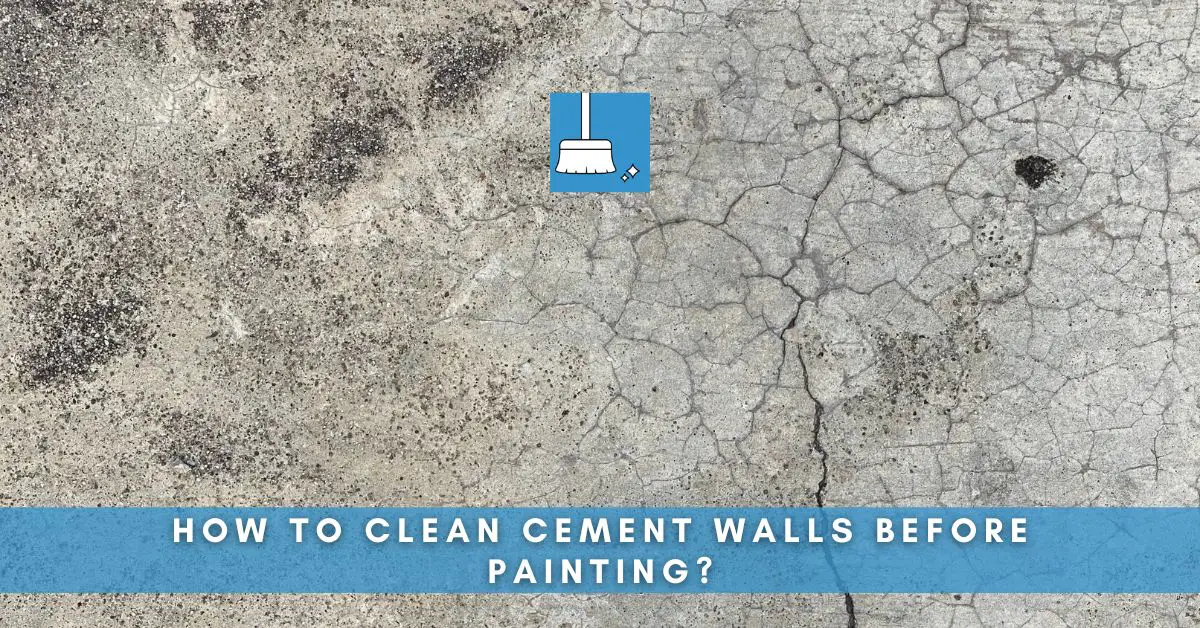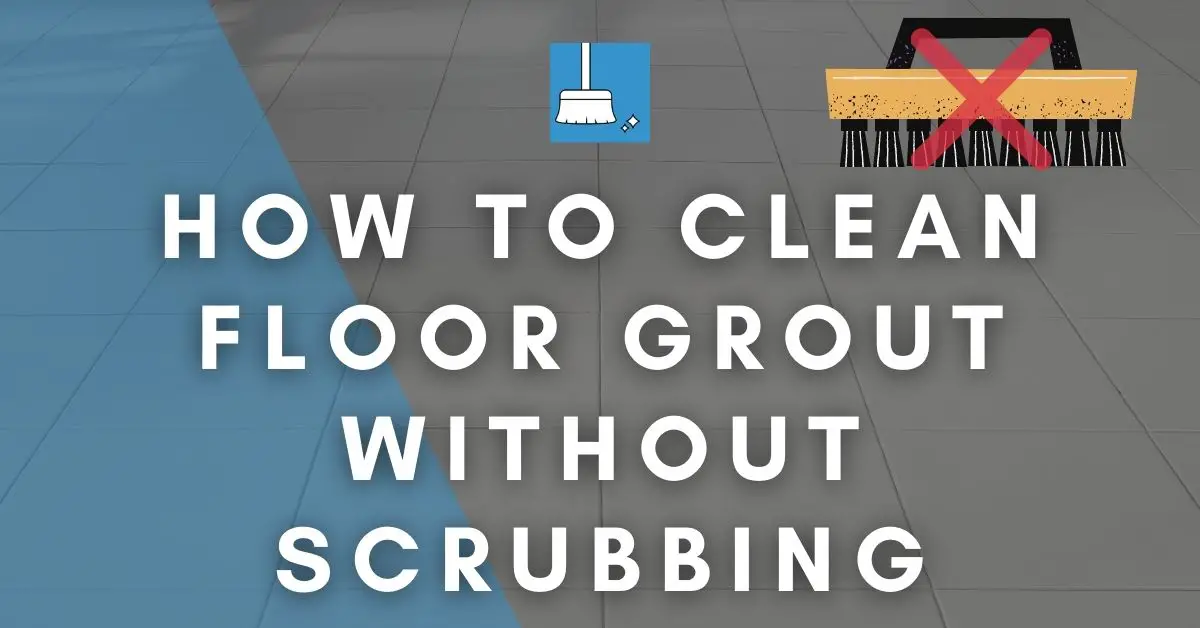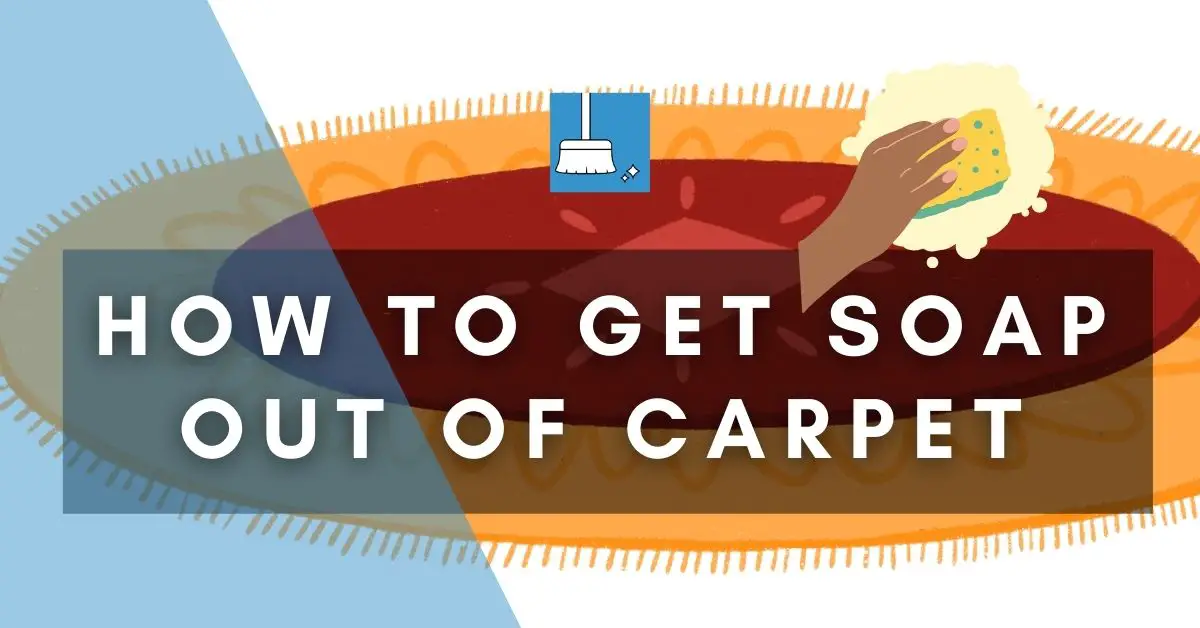An old cement wall that needs repainting or a new wall that has to be coated with fresh paint, will definitely need some prepping in the form of cleaning. In this article, we’ll see what should be done to clean cement walls before you start to paint them.
How to Clean Cement Walls Before Painting?
Painting a cement wall is a bit different from painting drywall as this will require more time.
A Cement surface that is unprepared might be weak or powdery and this will interfere with the paint. The porous cement will most probably have trapped some grease and dirt in it, and those need to be cleaned before the wall can be painted.
The aim is to get the cement surface to be clear so that the coating of paint comes out to be in its best form.
As inhaling cement is not good for the lungs and other organs, you will need to wear protective gear. Face mask, gloves and goggles are enough for the job.
YOU’LL NEED
1- Broom
2- Dish soap + water
3- Trisodium Phosphate + Putty knife (For grease or crayon stains)
4- Plastic tarp (For grass protection)
5- Hard bristle brush
6- Chlorine bleach + Hot water + Rag (For mold and mildew)
7- Hose
8- Sponge
9- 3 mil plastic sheet + Tape (For moisture testing-Optional)
10- Long handle brush
11- Scraper/drywall knife
12- Mineral spirits or turpentine / Paint stripper
13- Pressure washer (If the wall Is outdoors)
14- Crack fillers
15- 40-60 grit sandpaper
16- Hammer (If needed)
STEPS
STEP 1- If there is old blistering and peeling paint that you need to get rid of, scrape it off using a scraper/drywall knife and use mineral spirits or turpentine to remove it. If that doesn’t work, apply a paint stripper on the wall and leave it for a few hours before using a wide-wired brush to remove stubborn paint.
If it is an outdoor wall, you may simply fire up a pressure washer to strip the paint off. If it is a new unpainted cement wall, skip to step 4.
STEP 2- There are crevices (both conspicuous & inconspicuous), small holes, and defects on the cement wall, especially if it is old, that need to be filled with a concrete filler (also known as masonry crack fillers or simply “crack fillers”) to minimize water infiltration and moisture. According to the manufacturer’s instructions, fill all the areas with the Crack filler and let the filler dry.
STEP 3- Use a sandpaper of 40-60 grit to sand the cement surface (as the filler lumps or spackles will be sticking out) after the concrete filler has dried. If any spackle is a tough one, use a hammer to hit it several times until it comes off.
Note: After you’re done scraping and sanding the cement wall, make sure to collect all the debris from the floor as that can touch the paint roller later on, which in turn will go on the wall along with the paint.
STEP 4- Now, you have to clean the stains (if any) on the cement surface.
* If there are No Stains but only surface dirt and dust, simply use a solution of dish soap and water to scrub the wall.
* For Grease or Crayon stains (most likely in a basement, garage, or kitchen wall), use Trisodium phosphate. Make a poultice of 1 part TSP and 6 parts water and apply it to the greasy areas using a putty knife or anything similar. (Source)
Caution: If there are plants and grass in your area of work, cover them with plastic protection or make suitable arrangements for safe TSP runoff as the chemical can damage vegetation.
When the poultice dries on the wall, use a hard bristle brush to scrape and brush it away.
Another way of removing grease stains is to use heavy-duty detergent. Make a paste of water and detergent (Equal amounts) and use a hard scrub brush (non-metallic) to apply this paste over the wall and scrub the stains.
* For Mold and Mildew (especially in the corners): In a bucket containing about a gallon of hot water, add half a cup of chlorine bleach. Soak a hard bristled brush in the solution and use it to scrub the cement surface. Let bleach sit for 15 minutes before scrubbing again and cleaning the surface with warm water (applied with a rag).
STEP 5- We just can’t straightaway paint over the cement surface as we still need to rinse away the lingering TSP/detergent/bleach on the wall.
You may choose to hose down your cement wall if there is a drain nearby and the area won’t be flooded or you may use a wet sponge to remove the TSP/detergent/bleach from wall. In the latter case, you need to squeeze and rinse the sponge repeatedly.
STEP 6- Wait for the wall to dry completely. Usually, it takes 24-48 hours to dry completely but to be on the safer side, you may want to choose to wait for another day or two. To be absolutely sure about the dryness, it is advisable to do a moisture test to check if there is trapped moisture in the wall.
To perform this test, get a 3 mil plastic sheet and cover the wall by taping the sheet tightly (as air-tight as possible) to the wall. Then, wait for 24 hours. If the sheet is damp from inside (means the wall facing side), then you must wait for another 24-48 hours before you test the wall again.
STEP 7- After the cement wall has dried, again remove the surface dust by simply brushing it using a long handle brush.
Bonus Tips
1- For painting a cement wall, to prevent paint from peeling and cracking, it is best to use elastomeric paint, as that can shrink and expand as and when the cement does so.
2- Before painting a basement, it is highly recommended to open the windows and let the air pass through, turn the forced air furnace and the hot water tank off.
3- Before you move on to priming and painting the cement wall, it will be in your best interest to seal it using a masonry sealer. This will prevent future mold formation.
Conclusion!
It is important to clean the cement wall before painting it otherwise the paint will fail. First, scrape off the old cement (if any), then fill the cracks before you remove any stains. Finally, rinse off the surface and dry.





